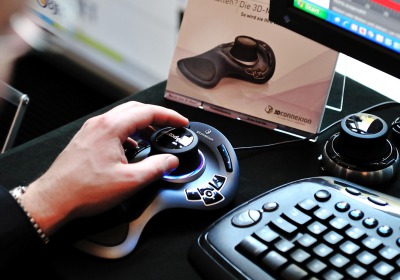Autodesk Automotive Days - Munich 2009
Thu, 10 Dec 2009Autodesk's Automotive Days design conferences, launched in Munich in 2008, have highlighted the key growth area of digital prototyping. And at last month's conference the focus was once again broadened to include coverage of conceptual design and creative visualization (at the very beginning of the design process) and design for manufacture - at the culmination of the process. Speakers from Autodesk outlined the innovative features of their latest product suites, while keynote presentations from leading automotive designers such as Frank Stephenson of McLaren and Volvo's Rickard Franklin showed in fascinating detail how the benefits of these software systems were being maximized in busy corporate design studios.
Opening the first day of the conference, Dave Rhodes, Autodesk global Vice President of Accounts and Consulting, described how the design message was being spread to professionals and consumers across the whole world: as examples, 45,000 people have chosen to follow Ford on its Facebook page, and Vietnam is tipped to become the next country – after India – to major on global IT outsourcing.
Yet, said Rhodes, these positive trends must be set against the harsh realities of today's automotive business, where there is at least 25 percent global overcapacity and more than half the supplier base has liquidity issues. The need to save costs makes the role of distinctive design even more critical: taking the example of Fiat's future strategy, its models will enjoy some 70 percent commonality -- leaving only 25 to 30 percent for design differentiation. Smooth changeover between models – where digital prototyping can be applied to the manufacturing and factory processes to powerful effect – is also increasingly vital, said Rhodes: an automaker can lose up to $1m for each day that a production line remains idle.
In a presentation entitled ‘Industrial design, Direction from Concept to Technical Surfacing’, Thomas Heermann, of Autodesk product design and industrial design, outlined the company's pre-eminent position in the world of digital design and visualization, employing 5,000 people, turning over $2 billion a year and with 10,000 Autodesk seats in use. Stressing the breadth of Autodesk's applications, Heermann said the company was much more than an automotive one, empowering creative professionals in all fields.
Luxury fashion brand Louis Vuitton was now designing car interiors, said Heermann, and Apple's ubiquitous iPhone was designed using Alias Surface and Alias Automotive; the link in to engineering programs was being exploited not just for technical surfacing but also to enable simulation techniques for the analysis of pedestrian collision kinematics and head impact scenarios at the design stage.
Trends in computer hardware were becoming evident, noted Heermann: while 20 percent of current Alias users were working on Mac platforms, some 30 percent of new customers signing up were Mac-based. Reflecting the increasing democratization of design software, Autodesk has developed a version of its Sketchbook program to run on the iPhone – enabling designers to sketch wherever they might happen to be.
Later on the first day of the conference Autodesk's Samir Hanna and Ed Martin addressed the topic of digital prototyping for manufacturing, explaining the interaction between the various tools on offer – Inventor for engineering and tooling design, Moldflow for injection-molding components, AutoCAD for 2D factory layout planning, and Navisworks, which can build a single digital factory model including the design of the building itself.
Phil Botley, of Svalinstudio, described how superluxury carmaker Bentley is switching its design studio from using ICEM Surf towards Alias modeling – whereas ICEM Surf had been the company's standard design review tool, the first full interior design review had been carried out in Alias this year. Modeling was currently split 50/50 between the two systems, said Botley, the plan was to move to 75 percent Alias.
Using images developed in Showcase, Botley showed how the interior of the new Continental Supersports derivative had been modeled from scratch in Alias; the interior clay was milled directly from Alias data, which was then taken into CATIA prior to dropping the clay into a production car pulled off the line. For the exterior facelift, the original ICEM Surf model was fine-tuned in Alias to Class A standards.
Continues →
By Tony Lewin

